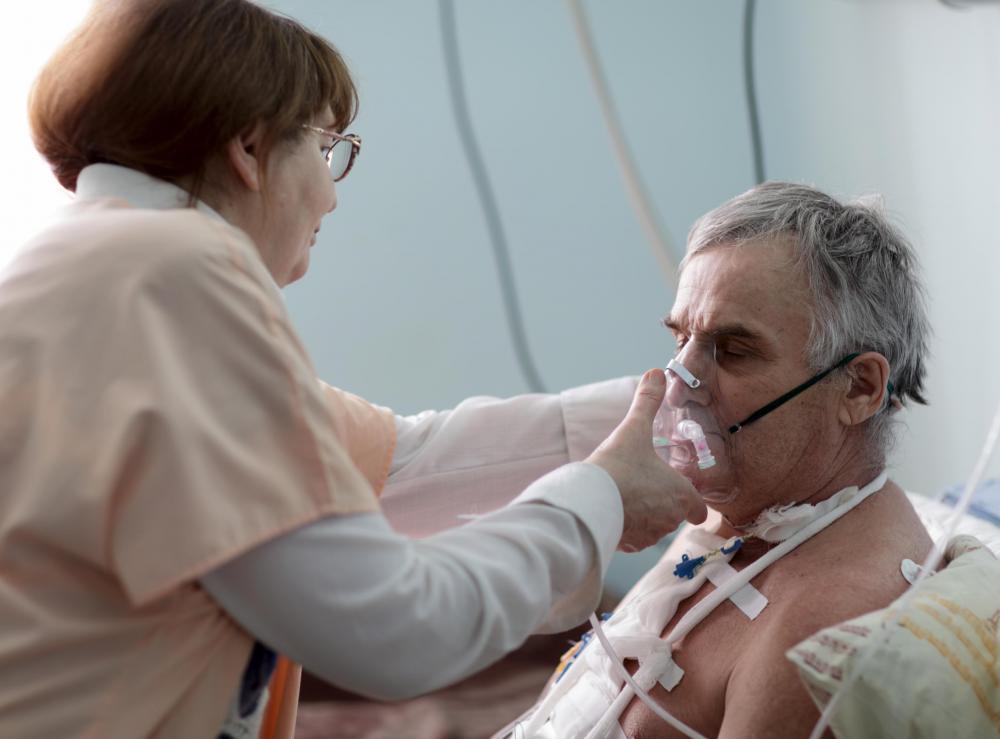At TheHealthBoard, we're committed to delivering accurate, trustworthy information. Our expert-authored content is rigorously fact-checked and sourced from credible authorities. Discover how we uphold the highest standards in providing you with reliable knowledge.
What is an Angioplasty Catheter?
An angioplasty catheter is a medical device designed for use in angioplasty procedures, where the goal is to address a blood vessel that has become narrowed or clogged. The angioplasty catheter has a design intended for easy use with a stent, a small tube left in place during the procedure to hold the vessel open. In some cases, the stent is installed directly on the catheter at the factory for convenience. Medical supply companies typically carry angioplasty catheters in a range of designs and styles, and they can be ordered by hospitals, as well as cardiac catheterization clinics.
The typical angioplasty catheter consists of a narrow tube with an attached inflatable balloon. When the catheter is inserted, the balloon is left uninflated to make it easy to thread the catheter safely into the patient. A radiologist is typically present to guide this part of the procedure, ensuring the catheter is placed in the correct blood vessel. Once it is in place, the balloon is inflated to push the walls of the vessel out, allowing for stent placement. In a stent catheter, the stent is attached, and inflating the balloon opens the stent. The balloon can be carefully deflated to allow the care provider to pull the angioplasty catheter out.

Angioplasty catheters come packaged in individualized sterilized packaging, and they are intended for a single use only. Like other medical devices used inside the body, very high standards of sterility are needed for patient safety, as bacteria could be introduced if the tools are not scrupulously clean. Before the angioplasty procedure, the area of insertion is carefully prepared and draped to create a clean field for the care provider to work in, limiting the risks of exposure to contaminants.

A number of sizes are available for different kinds of blood vessels and applications. When an angioplasty catheter is selected for a procedure, the physician considers the patient's overall size, along with the size of the blood vessels in the region involved. If imaging studies like angiograms have been performed, these will be consulted for additional guidance. The goal is to select an appropriate size on the first try to avoid patient discomfort and limit waste.
Performing an angioplasty requires some specialized training and skills. If the catheter is not guided in properly, there is a risk of rupturing the blood vessel or damaging neighboring structures in the patient's body. Imaging is used for guidance to reduce the risk of mistakes and provide feedback in real time, and many facilities have a specialized catheterization lab, where care providers have extensive experience in these procedures.
AS FEATURED ON:
AS FEATURED ON:












Discuss this Article
Post your comments